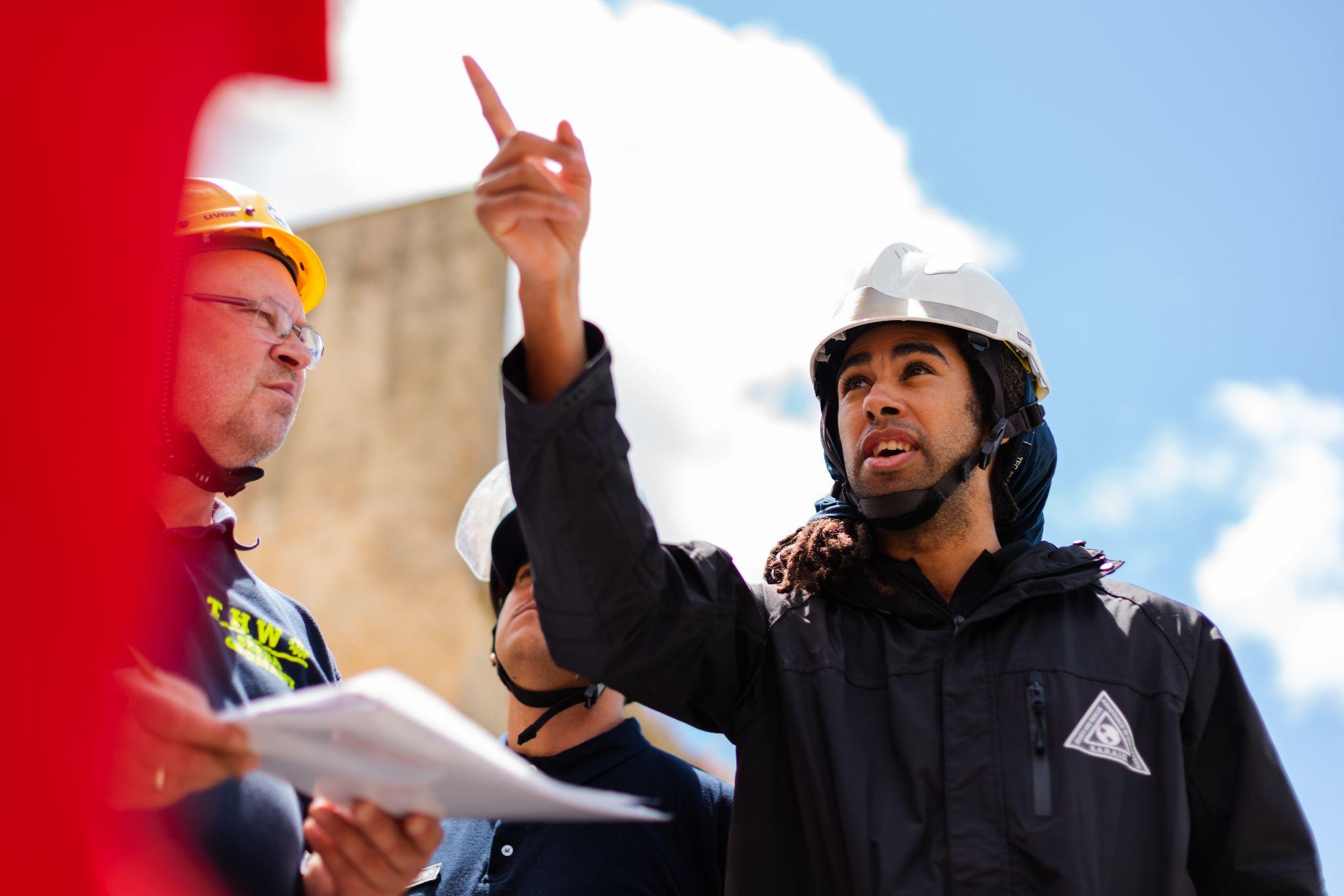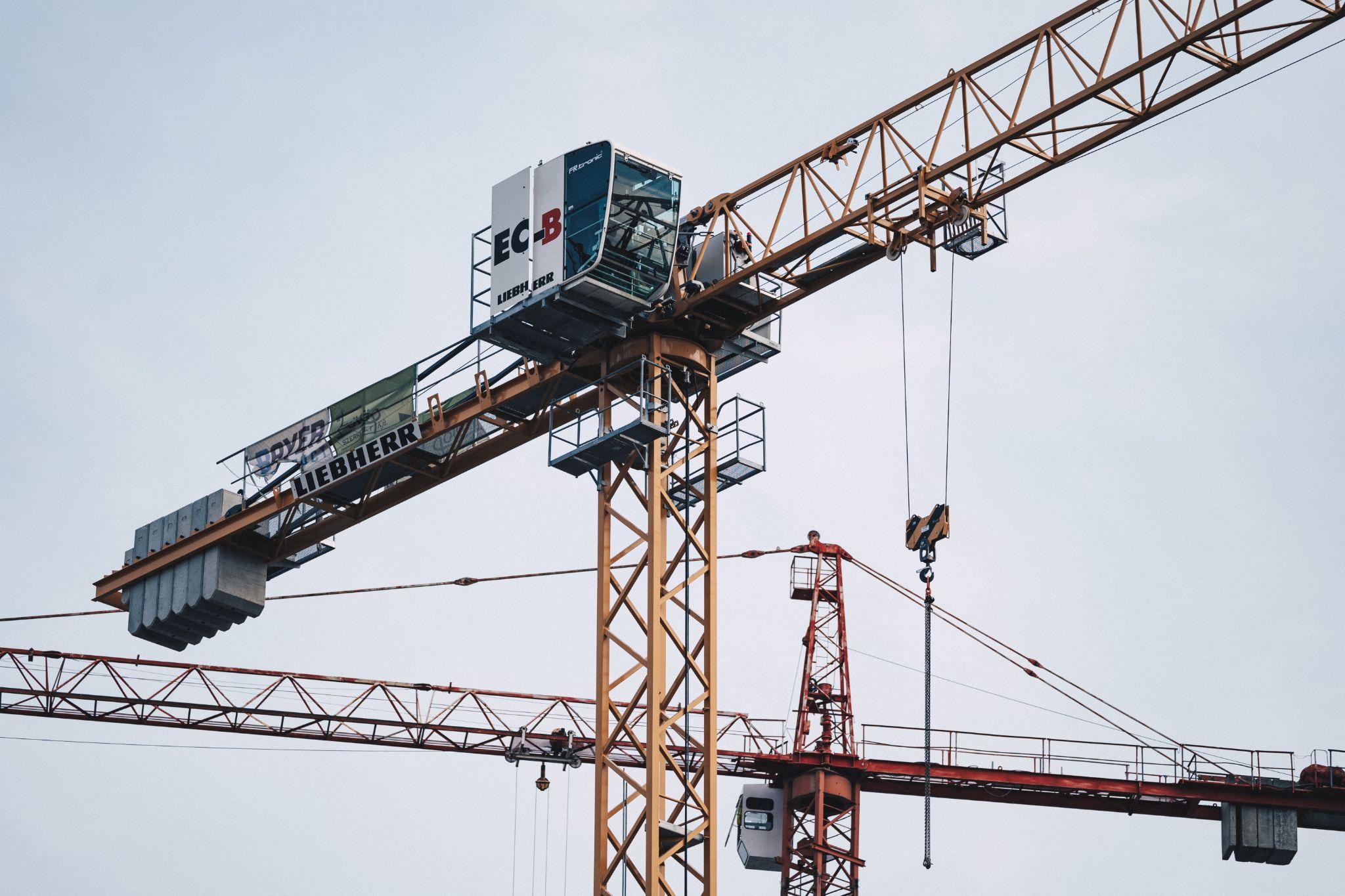Noisy surroundings are commonplace for both small- and large-scale equipment operators. While clear communication is essential, it can be challenging when there is too much noise or other disruptions. Drilling, stacking, and digging are just a few tasks crane operators may have to perform. There are frequently blocked views as well, and attempting to conduct a lift while there is poor vision puts everyone in danger of suffering significant injuries.
Radio is often used to send instructions across a job site, but occasionally noise interferes, or an operator needs more specialized help. That’s where hand signals come in. Crane hand signals allow the operator to quickly recognize their next move and determine whether there is danger or a need to cease any operation.
Read on to learn the most common crane hand signals and their importance for crane operations.

Photo by ThisisEngineering RAEng on Unsplash
Why Use Crane Hand Signals?
The designated person who uses hand signals is the crane operator’s eyes and ears. This responsibility calls for training to make sure they can communicate clearly and swiftly, especially under pressure. Here, precision could mean the difference between safety and harm. In addition, a crane signal operator who is completely qualified and certified will be aware of how different equipment types operate and will be able to modify signals as necessary. As a result, they are a valuable addition to any worksite and provide a strong barrier against risk and danger.
When there is complete trust and confidence between the operator and the signaler, the operation is more accurate, precise, and efficient. The operator can then carry out tasks securely and avoid any threats. Hand signals help operators perform more efficiently and professionally while demonstrating their skill and commitment to safety to clients, teammates, and managers—everyone involved wins.
Top Crane Hand Signals You Should Know
In addition, check some of the top crane hand signals you need to know for crane operations.
Stop Signals
The most important signals for crane operation are stop signals, which allow the signal person to convey the requirement to halt movement and activity.
- Stop signal. Extend one arm out to the side with the palm down, then swing it back and forth until it touches your chest.
- Emergency stop. When you need the crane to suddenly swing your arms back and forth until they touch your chest, then release them back to the sides.
- Pause. Clasp your hands and hold them before your navel to signalize the operator to pause.
Boom Signals
Boom signals tell the crane operator whether to raise or lower the long arm that protrudes from a crane. Three typical boom signals are as follows:
- Raise boom. Extend your arm outside and make a closed fist with your thumb pointing up.
- Lower boom. Extend one arm forth and make a closed fist with the thumb pointing downward.
- Swing boom. Extend your arm outward and aim your index finger in the desired boom-swinging direction.
Load Signals
The long chain with a hook that fastens to the load and the crane’s hoist is used to raise or lower the load as directed by load signals. Two typical load signals are:
- Lift a load. Extend a vertical arm while pointing a finger upward and making clockwise motions with the hand.
- Lower a load. Reaching out vertically, pointing a finger downward, and making little, counterclockwise motions with the hand.
To maintain the crane within safe operating limitations, you might need to employ combination orders because raising and lowering the boom alters the load radius. Two typical combo commands are:
- Raise the boom, then drop the load. Extend your arm outward, pointing your thumb up, and moving your fingers open and closed.
- Lower the boom and hoist the load. Extend an arm, point the thumb downward, and open and close the other fingers.
Additionally, there are a few boom commands that are unique to telescopic cranes, which have extendable and retractable booms. Telescopic cranes need to know just two commands:
- Telescope in. The hands should be held at waist level with the thumbs pointing outward and the fists closed.
- Telescope out. Focus by placing your hands at waist level, pointing your thumbs inward, and keeping your fists closed.

Photo by Bence Balla-Schottner on Unsplash
Final Thoughts
Safety is the main priority of crane operators. When positioned in a vantage point, a person using hand signals can see the load area from a crane operator-unnoticeable angle. Therefore, standardized crane hand signals are a must to ensure the safe operation of cranes, whether massive all-terrain cranes or small carry deck cranes, which can weigh thousands of pounds and carry enormous loads. Hand signals are reliable, universal, and low-tech to improve safety during operation and avoid accidents.









